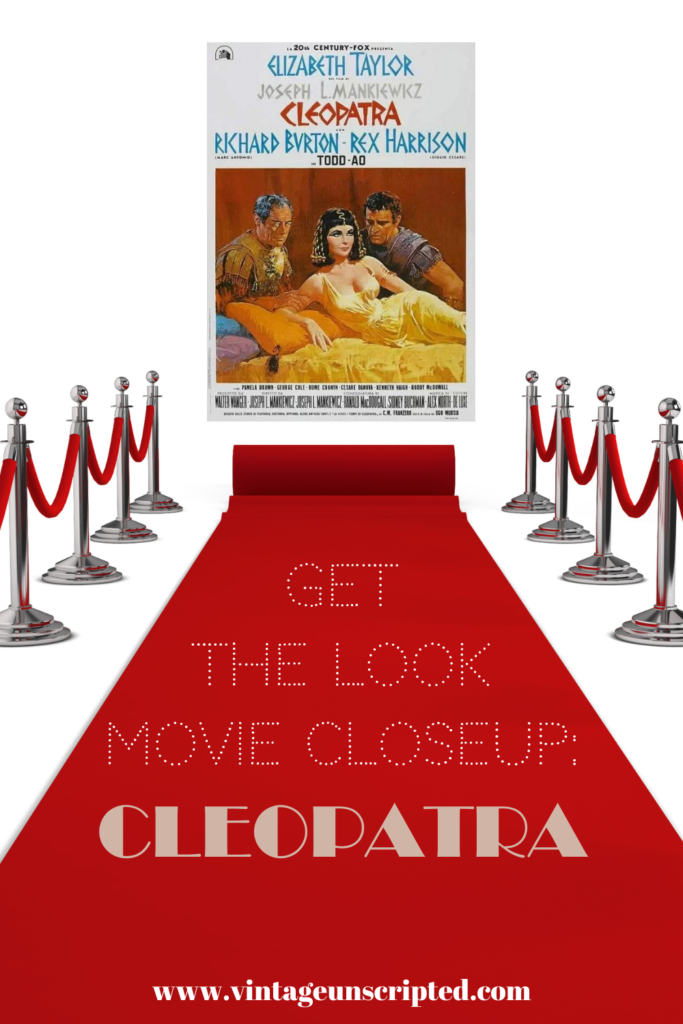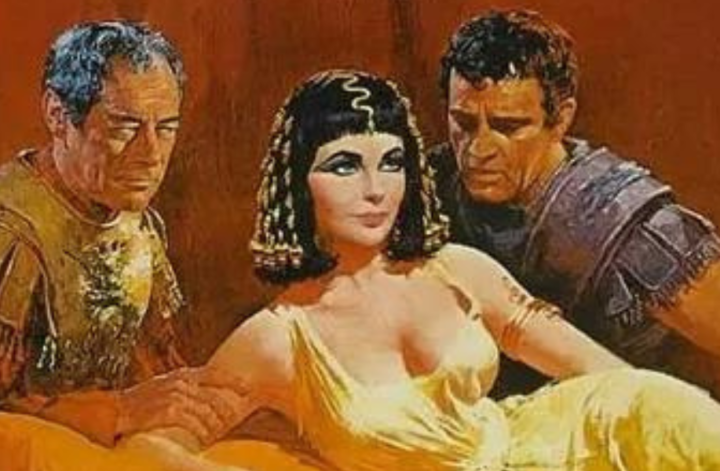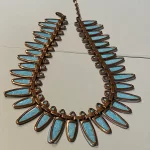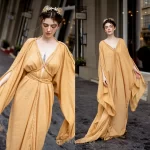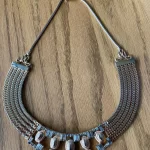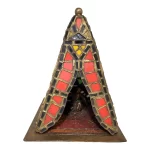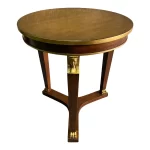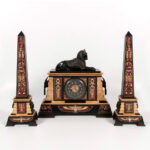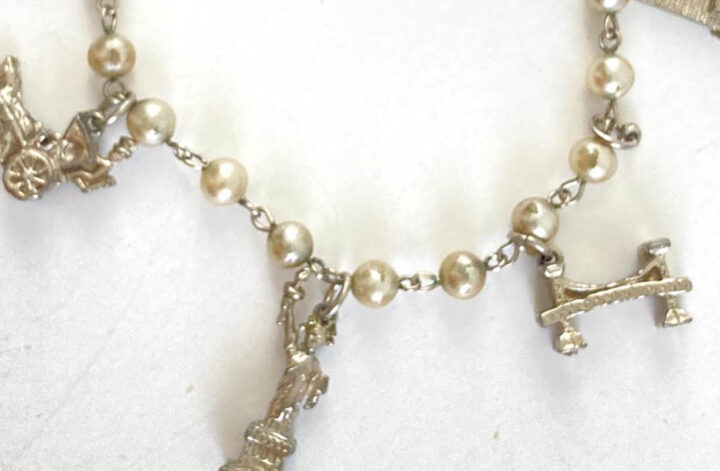Egyptian revival has had three spotlight moments. Once in the early 1800s following Napoleon’s Egyptian campaign, again in the 1920s following the discovery of Tutankhamun’s tomb and then again in the 1960s following the extravagant blockbuster film Cleopatra.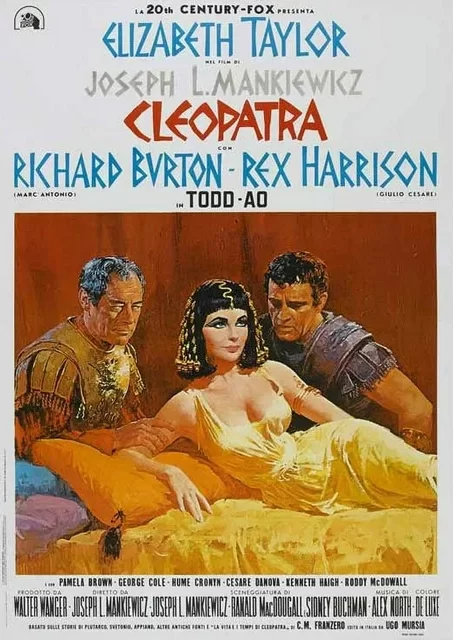
Starring Elizabeth Taylor, Richard Burton, Rex Harrison, Cleopatra (1963) was the most expensive movie ever made at the time. It was also the highest-grossing film of the year. Imagine this: the original film screened for the studio executives was six hours long. Director Joseph Mankiewicz originally wanted the movie to be two films, “Caesar and Cleopatra” and “Antony and Cleopatra.” Instead, the movie was cut back to just over three hours long. Still quite a long movie.
The epic story is a tale of love and yearning for power. Filmed in England, Italy and Spain, the locations are as stunning as the set design. Huge groups of actors, incredible costumes and cinematography help to make this epic film so special. Cleopatra was nominated for 9 Academy Awards and won four.
The Plot
There are so many plot points that a synopsis is nearly as long as the movie. The story follows Cleopatra after the Battle of Pharsalus. Julius Caesar, after defeating Pompey’s army, takes control of Rome. He is convinced by Cleopatra to overthrow her brother and crown her Queen of Egypt. Caesar sets his power plan in place, hoping to become the dictator of Rome.
Ever the strategic opportunist, Cleopatra becomes enamored with power and seduces Caesar in her attempt to rule both Egypt and Rome by bearing Caesar’s son. Cleopatra’s arrival in Rome is quite the scene. It’s worth watching the movie for that alone.
On the Ides of March, Caesar is assassinated to prevent him from becoming the Roman king. A rebellion ensues and the Republic is split between Octavian, who is Caesar’s nephew, Marc Antony, and Marcus Aemilius Lepidus. When Cleopatra learns that Octavian has been named Caesar’s official heir rather than her son Caesarion, she becomes furious and returns to Egypt.
Meanwhile, Antony now has control of the Eastern provinces of the Roman Republic. Realizing he needs money to continue his campaigns eastward, he turns to Egypt and Cleopatra. The two fall in love. But Antony is forced to return to Rome and is coerced into marrying Octavia, Octavian’s sister. Of course, Cleopatra is incensed.
When Antony returns to Egypt, his remorse for marrying Octavia forces him to divorce her and return to the arms of Cleopatra. Octavian learns that Antony wishes to be buried in Egypt, so Rome turns against him and war ensues. Antony quickly loses his battle against Octavian. Cleopatra, assuming Antony is dead call her army back to Egypt.
Antony returns to Egypt but is convinced by Apollodorus that Cleopatra is dead. In his sorrow, Antony falls upon his sword. Upon seeing this, Apollodorus tells Antony the truth and takes him to the tomb where Cleopatra has taken refuge. He dies in her arms. Octavian and his army march into the city. Cleopatra learns of the death of her son Caesarion. Upon realization of Octavian’s triumph, Cleopatra arranges her own demise. She is found in her chamber dead, dressed in gold funeral dress along with her servants, all of whom were bitten by a venomous snake.
The Designers
It took seven art directors and three set decorators to handle a film this large and luxurious. Watching the epic, it’s pretty easy to see they all had their hands full pulling off the monumental vision.
Three designers handled the costume design. Vittorio Nino Novarese designed the men’s costumes. Renié dressed the women in supporting roles and Irene Sharaff was responsible for Elizabeth Taylor’s costumes. All the costumes are good, but Sharaff’s designs are so incredible they would make the movie an epic even without the grandness of the rest of it.
These masters of their craft and their Academy award-winning work on Cleopatra generated the Egyptomania fad of the 1960s that we see in some of the decor, art and clothing we find in vintage stores now. There are definitely Egyptian Revival pieces from the 1920s available in antique stores, but the 1960s pieces are more common.
Get the Look
Dress like Cleopatra
Elizabeth Taylor’s costumes were stunning, close-fitting sleeveless bodices, flowing skirts and plunging necklines to show off her décolletage. Ceremonial outfits, like the Isis goddess outfit worn for her entrance into Rome, were over the top with glamour. Her lounging wear was equally stunning.
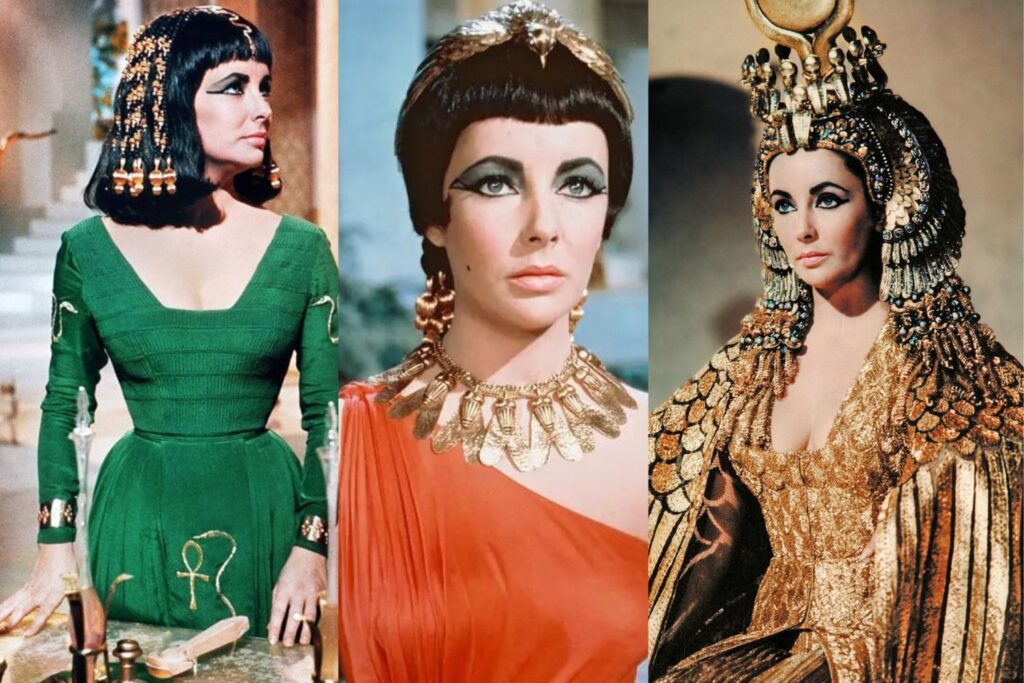
You might not want to rock an elaborate headdress, but you can choose Cleopatraesque accessories and gowns.
Egyptomania Home Decor
The most common home decor pieces inspired by Cleopatra are lamps: column lamps, figural lamps, gilt lamps, and stone lamps.
We also can’t resist a good Egyptian-style chair or table, with a classic clock garniture thrown in for good measure.
Extra Credit:
Learn more about The Set Designs of “Cleopatra” from Architectural Digest
For background on the production of Cleopatra as well as detailed information about the costumes, read: FIT/NYC Fashion History Timeline Mankiewicz, Cleopatra
Enjoy an essay on Egyptian Revival from the Metropolitan Museum of Art
The filming of Cleopatra was also the start of another epic story, the romance between Elizabeth Taylor and Richard Burton. Read some of the gossipy details here.
If you want to listen to the tea being spilled about the making of Cleopatra, we highly suggest the What Went Wrong podcast episode.
